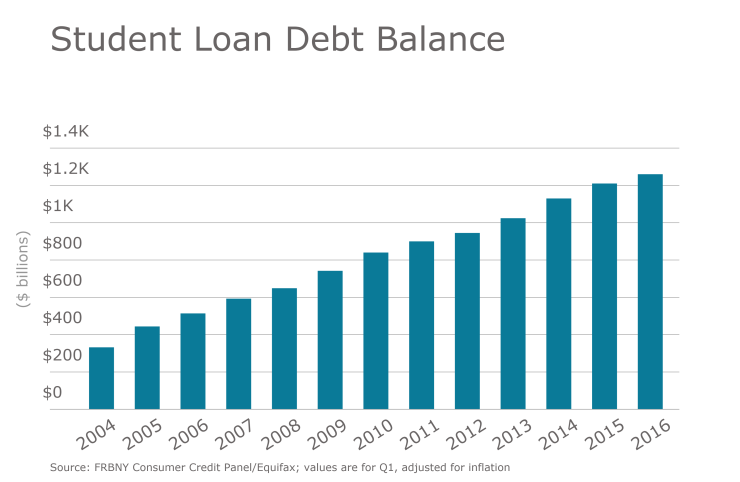Saddled with about
The changing workforce demographic has created a new protocol for HR departments to follow, which includes updating the benefits package to resonate with younger employees.
The average debt-to-salary for 20 to 30-year-olds is 60% to 70% or higher — and this debt is stifling, according to Scott Thompson, the CEO of student loan reimbursement platform company Tuition.io. “As we explore the data here and we give that to employers, they’re beginning to understand the real true benefit” of debt relief programs, he says.
Although only 4% of employers currently offer student loan repayment benefits, according to the Society of Human Resource Management, that number is increasing.
Citing a 2016 Willis Towers Watson

Companies such as
Companies look to student loan repayment providers like Tuition.io and Gradifi — the latter is used by
See also:
The benefit is not tax-treated, however, which makes it a difficult offering for the majority of companies to squeeze into their
That might change, however. U.S. Rep. Rodney Davis (R-Illinois) introduced
“Congress understands the size of the problem,” says Rob Reiskytl, a partner at Aon. “I think the difficulty is if you take action to enact legislation, it represents a tax loss.”
Existing legislation allows companies to offer up to $5,250 in tuition reimbursement, but employees are often looking to pay off existing student debt, not take on more.
Employers are capitalizing on this by slowly distributing a lump sum over five to eight years, which increases retention rates if employees want to take full advantage of the benefit.
Companies that can’t offer student loan reimbursement payments often opt for other benefits, such as consolidation programs and refinancing arrangements, according to
The consulting firm anticipates 34% of employers will offer student loan consolidation programs by 2021, up from 8% in 2018, and 35% of employers will offer student loan refinancing arrangements by 2021, up from 10% in 2018.
“They might want to tackle the issue of student loan debt, but they want to tackle it as a broad perspective,” Reiskytl says. “Sometimes as employers, we fall into the trap of solving a problem without understanding the context in which the problem presents itself. The issue of student loan debt lives in a bigger financial ecosystem in an employee’s life.”





